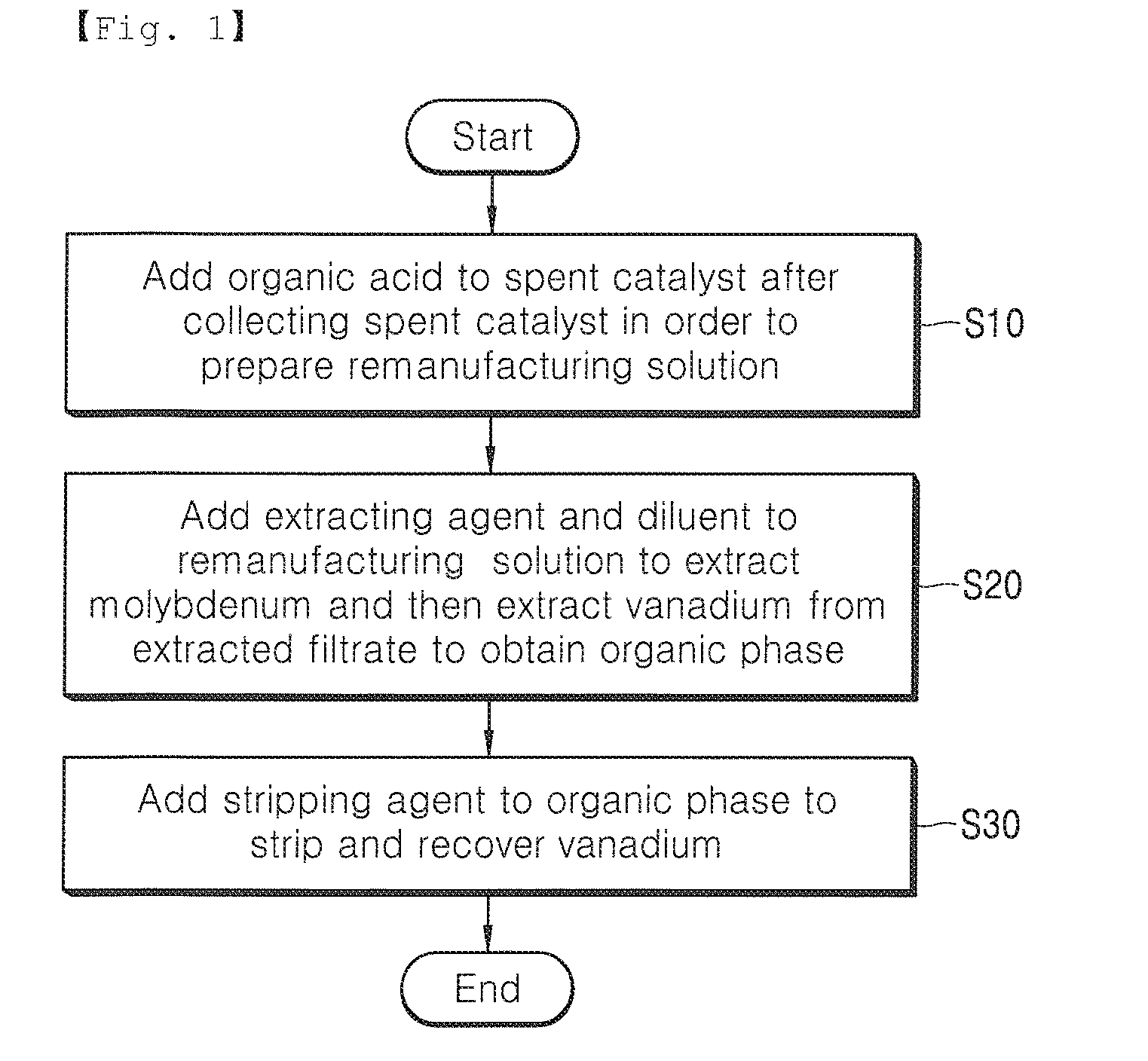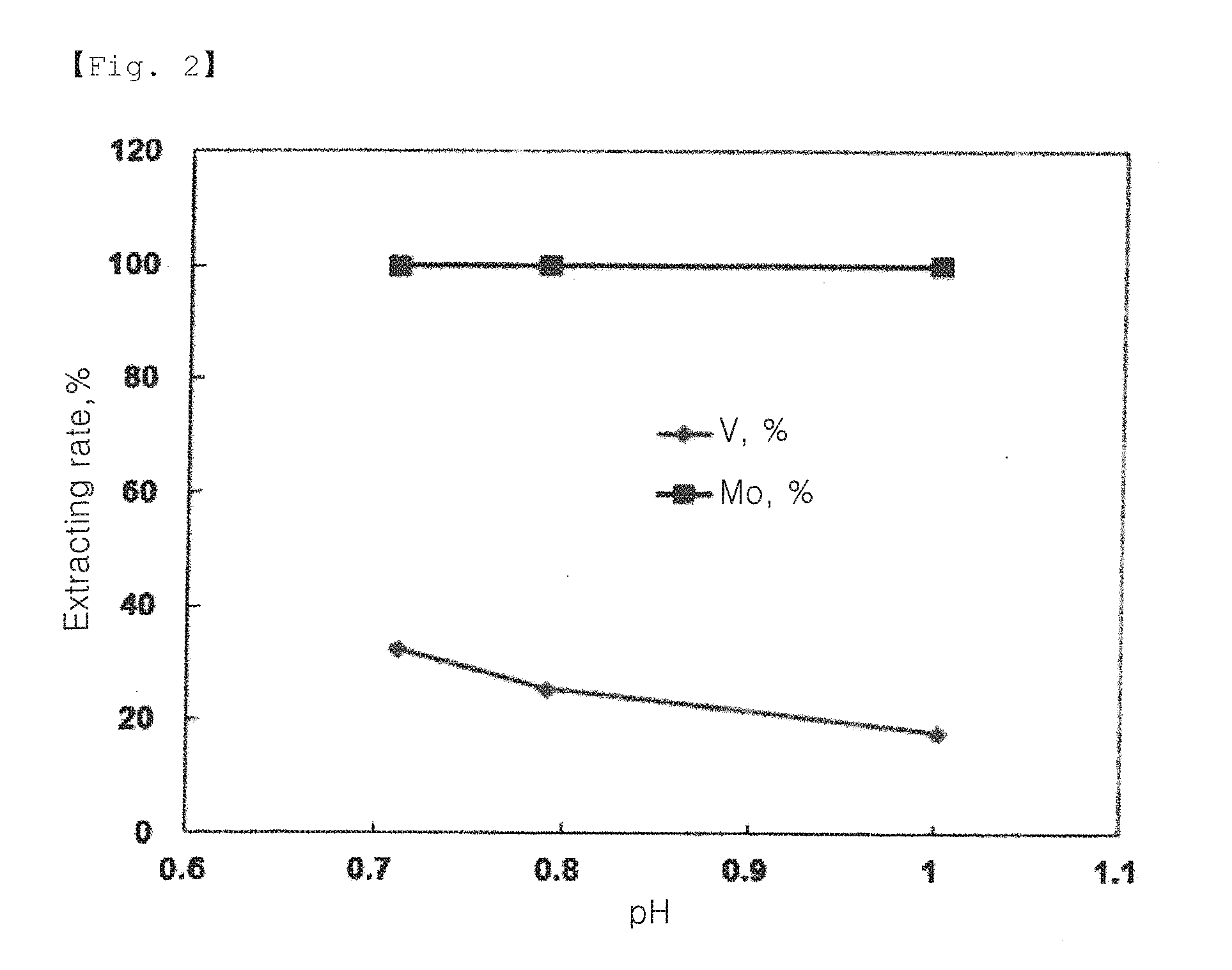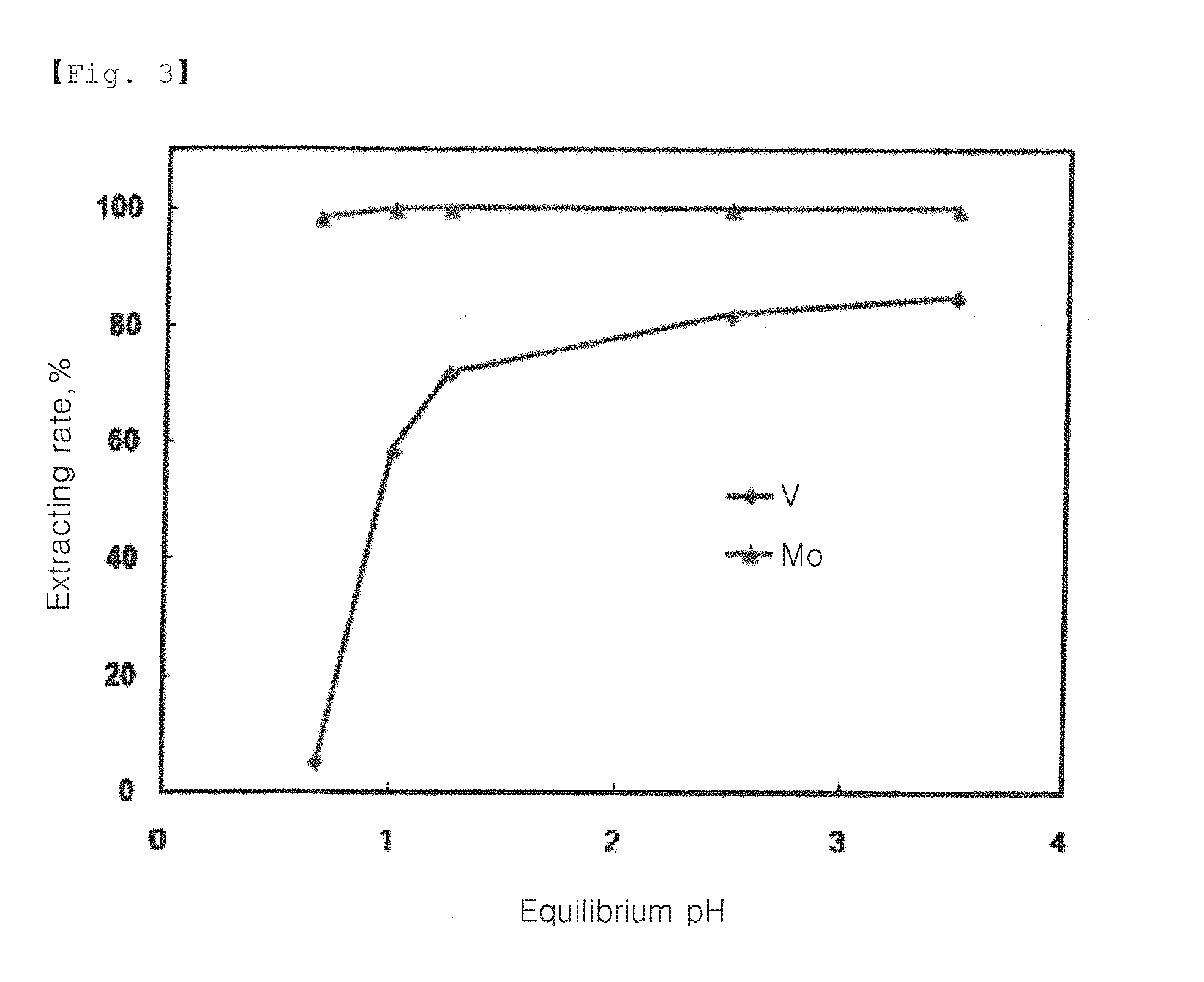Method of separating and recovering valuable metal from remanufacturing solution of spent desulfurization catalyst containing vanadium
a desulfurization catalyst and remanufacturing solution technology, which is applied in the direction of vanadium compounds, separation processes, niobium compounds, etc., can solve the problems of not being able to treat the spend catalyst, and achieve the extraction rate of uranium and vanadium from the spent catalyst containing, and the effect of low cos
- Summary
- Abstract
- Description
- Claims
- Application Information
AI Technical Summary
Benefits of technology
Problems solved by technology
Method used
Image
Examples
embodiment 1
Separation and Recover of Valuable Metal from Remanufacturing Solution of Spent Desulfurization Catalyst Containing Vanadium 1
[0057]Step of Adding Organic Acid to a Spent Hydrodesulfurization Catalyst after Collecting the Spent Hydrodesulfurization Catalyst in Order to Prepare Remanufacturing Solution of the Spent Hydrodesulfurization Catalyst:
[0058]A waste liquid containing vanadium, molybdenum and aluminum had been collected from a spent hydrodesulfurization catalyst. The waste liquid is generated during the process of cleaning the spent catalyst. The waste liquid had been cleaned with oxalic acid of 10 volume % to prevent other impurities of the catalyst from being resolved so that the remanufacturing solution of the spent hydrodesulfurization catalyst had been prepared. The metal content of the waste liquid had been analyzed with an ICP-OES, so that the waste liquid had contained Mo of 1.40 g / l, V of 1.24 g / L and Al of 1.77 g / L.
[0059]Step of Adding an Extracting Agent and a Dilu...
embodiment 2
Separation and Recover of Valuable Metal from Remanufacturing Solution of Spent Desulfurization Catalyst Containing Vanadium 2
[0065]The valuable metals had been separated and recovered from the remanufacturing solution through the same method as that of Embodiment 1 except for the process of precipitating oxalate ions with CaCl2 to remove the oxalate ions from the waste liquid before performing the solvent extracting process. The removal of the oxalate ions is for the purpose of preventing organic solvents containing oxalate from reacting with each other during the solvent extracting process. For precipitation, the remanufacturing solution to which CaCl2 is added had been continuously agitated for 12 hours in chemical stoichiometry. The precipitate had been separated from the solution by filtering the solution with a glass membrane filter having a pore size of 0.45 μm after the agitation, so as to collect the filtered solution. The oxalate precipitation reaction using CaCl2 is expre...
embodiment 3
Separation and Recover of Valuable Metal from Remanufacturing Solution of Spent Desulfurization Catalyst Containing Vanadium 3
[0069]The vanadium had been extracted through the same method as that of Embodiment 2 except for mixing Alamine 330 of 20 volume % with TBP and kerosene of 15 volume % to extract vanadium at 3.5 pH and O / A ratio of 1. In this case, the extracting rate of vanadium was 85%. FIG. 3 is a graph illustrating an extracting rate of molybdenum and vanadium according to an equilibrium pH. As shown in FIG. 3, the extraction of Mo was higher than that of V at a low pH. As the equilibrium pH had been increased, the extracting rate of vanadium had been increased. Both Mo and V were extracted at the equilibrium pH of 2.0. According to the present invention, after removing Mo at a low equilibrium Ph where vanadium can be reused in the form of V2O5, the vanadium had been extracted from the extracted filtrate (raffinate, materials or liquid remaining after removing most of mat...
PUM
| Property | Measurement | Unit |
|---|---|---|
| temperature | aaaaa | aaaaa |
| temperature | aaaaa | aaaaa |
| temperature | aaaaa | aaaaa |
Abstract
Description
Claims
Application Information
 Login to View More
Login to View More - R&D
- Intellectual Property
- Life Sciences
- Materials
- Tech Scout
- Unparalleled Data Quality
- Higher Quality Content
- 60% Fewer Hallucinations
Browse by: Latest US Patents, China's latest patents, Technical Efficacy Thesaurus, Application Domain, Technology Topic, Popular Technical Reports.
© 2025 PatSnap. All rights reserved.Legal|Privacy policy|Modern Slavery Act Transparency Statement|Sitemap|About US| Contact US: help@patsnap.com



